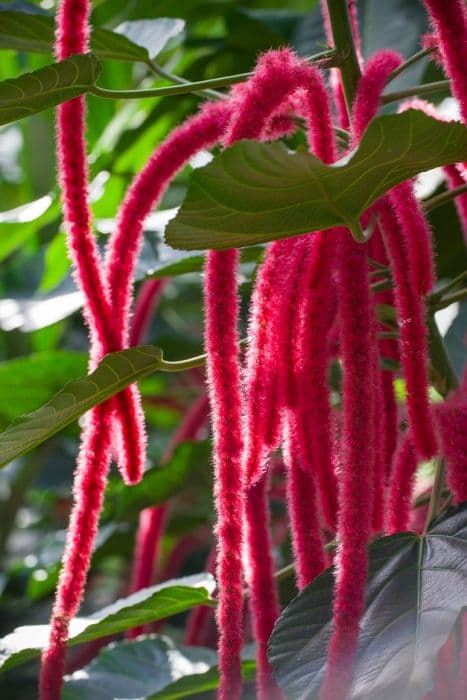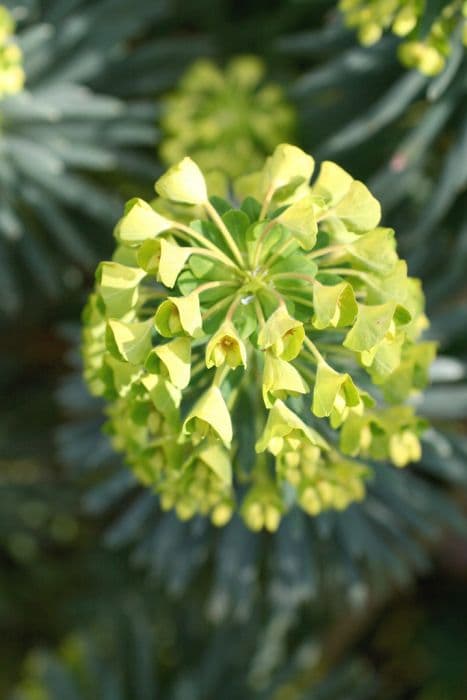Cow's Horn Euphorbia Euphorbia cornigera
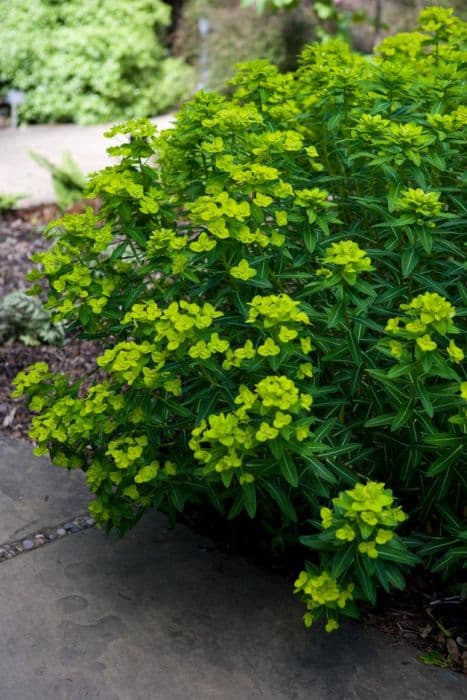
ABOUT
Euphorbia cornigera, commonly known as the Horned Spurge, is a plant with a distinct appearance characterized by its structural components rather than by its specific dimensions. It is a succulent type plant, meaning it has thick, fleshy parts adapted to store water. The Horned Spurge exhibits green to gray-green stems which may have a cylindrical shape and are often adorned with patterns of horizontal ridges or markings. These stems give rise to sparse foliage; the leaves are generally small, narrow, and may come in colors ranging from green to blueish or even have a reddish tinge depending on the lighting and environmental conditions. One of the most notable features of the Horned Spurge are the "horns," which are in fact modified structures that emerge periodically along the stems. These can give the plant a somewhat spiky or armored appearance. The flowers are small and inconspicuous, typically yellow in color, and are surrounded by specialized leaf-like structures called bracts. These bracts might be mistaken for the plant's flowers due to their showier and more eye-catching form. The overall shape of the Horned Spurge is generally upright, with a branching pattern that can give it a bushy or slightly sprawling look. The overall impression of this plant is one of a hardy, resilient specimen with a compelling, almost sculptural form that stands out in succulent collections or rock gardens where it's commonly placed for ornamental purposes.
About this plant
 Names
NamesFamily
Euphorbiaceae
Synonyms
Horned Spurge, Horned Euphorbia
Common names
Euphorbia cornigera
 Toxicity
ToxicityTo humans
Euphorbia cornigera, commonly known as Spurge, contains a toxic white, milky sap called latex, which is present throughout the plant. This sap can cause significant irritation to the skin and mucous membranes upon contact. If ingested, the toxic compounds in the sap can lead to symptoms such as intense burning sensations in the mouth and throat, swelling of the tongue, nausea, vomiting, and diarrhea. In severe cases, or if a large amount has been ingested, it can potentially cause more serious symptoms, including stomach pain, headache, and even temporary blindness if the sap comes into contact with the eyes. Due to these toxic effects, it is crucial to handle Spurge with care and to keep it out of the mouths of children and pets.
To pets
The toxicity of Euphorbia cornigera, or Spurge, to pets is similar to its toxicity to humans. The plant's sap contains irritants and toxic compounds that can be harmful if ingested or if they come into contact with the animal's skin or mucous membranes. Common symptoms of poisoning in pets after ingesting this plant include drooling, vomiting, diarrhea, pawing at the face due to mouth irritation, and in some cases, difficulty breathing if the airway is swollen. Topical contact with the sap can also lead to skin irritation and inflammation. If the sap gets into the pet's eyes, it can cause severe pain and temporary or even permanent blindness. Pet owners should keep animals away from Spurge and seek veterinary care immediately if they suspect their pet has ingested or come into contact with any part of the plant.
 Characteristics
CharacteristicsLife cycle
Perennials
Foliage type
Evergreen
Color of leaves
Varies
Flower color
Yellow
Height
2 feet (0.61 meters)
Spread
2 feet (0.61 meters)
Plant type
Shrub
Hardiness zones
5
Native area
Mexico
Benefits
 General Benefits
General Benefits- Ornamental Value: Euphorbia cornigera, commonly known as Horned Spurge, is often used in gardens and landscapes for its distinctive shape and structure, which adds visual interest.
- Drought Resistance: The Horned Spurge is well-suited to xeriscaping due to its ability to thrive in dry, arid conditions, making it ideal for water-conservation gardens.
- Low Maintenance: This plant requires minimal care once established, needing only occasional watering and no fertilization, making it a good choice for low-maintenance gardens.
- Erosion Control: The root system of Horned Spurge helps stabilize the soil, making it useful for controlling erosion on slopes and in other vulnerable areas.
- Pest Resistance: Euphorbia cornigera is generally resistant to pests and diseases, reducing the need for chemical treatments and making it a more sustainable gardening choice.
- Adaptability: The plant can adapt to a wide range of soil types, although it prefers well-drained soil, making it versatile in different garden settings.
- Seasonal Interest: Horned Spurge produces attractive blooms and interesting seed pods that provide seasonal interest and can be particularly striking in the winter landscape when other plants have died back.
- Supporting Wildlife: While the sap is toxic to many animals, the flowers can attract beneficial insects, such as pollinators, which are vital to the health of the ecosystem.
 Medical Properties
Medical Properties- Analgesic: Euphorbia cornigera may have compounds with pain-relieving properties.
- Anti-inflammatory: It could contain substances that help reduce inflammation.
- Antimicrobial: Some components in the plant might be effective against certain bacteria or fungi.
- Antioxidant: The plant may have antioxidant effects that help in protecting cells from damage.
- Purgative: Traditionally, Euphorbia species have been used as a purgative, although the use of this plant specifically for this purpose is not well-documented.
 Air-purifying Qualities
Air-purifying QualitiesThis plant is not specifically known for air purifying qualities.
 Other Uses
Other Uses- Euphorbia cornigera, commonly known as Crown of Thorns, can be used as a natural fence due to its thorny stems which can deter animals and intruders from crossing property lines.
- The plant's sap has been traditionally used as a fish poison in some cultures, leveraging its toxic properties to temporarily stun fish, making them easier to catch.
- Crown of Thorns is sometimes implemented in drought-resistant landscaping, playing a role in xeriscaping to conserve water usage in dry climates.
- Its striking appearance, with its colorful bracts, makes Crown of Thorns a popular choice for ornamental uses in religious ceremonies, particularly around Easter.
- Adaptible to a range of soil types, Euphorbia cornigera can be used in soil stabilization practices to prevent erosion in susceptible areas.
- The plant may be used in educational contexts as a model organism to study plant defense mechanisms due to its toxic sap and physical thorns.
- With proper shape pruning, Crown of Thorns can be cultivated as a bonsai, providing an exotic and challenging specimen for enthusiasts.
- Because of its ability to thrive in harsh conditions, it can be grown in urban environments with pollution and poor soil quality where other plants may struggle.
- In its native Madagascar, local artisans may use its thorny branches in the creation of unique crafts and artwork, promoting sustainable use of native plant species.
- Crown of Thorns’ colorful and durable bracts can be used for decorative purposes in dried floral arrangements, as they retain their appearance for an extended period.
Interesting Facts
 Feng Shui
Feng ShuiThe Euphorbia cornigera, commonly known as the African Milk Tree, is not typically used in Feng Shui practice.
 Zodiac Sign Compitability
Zodiac Sign CompitabilityThe African Milk Tree is not used in astrology practice.
 Plant Symbolism
Plant Symbolism- Endurance - Euphorbia cornigera, commonly known as Horned Spurge, grows in tough conditions, symbolizing the ability to endure and thrive in challenging environments.
- Resilience - This plant's capacity to bounce back from adversity represents the resilience and tenacity in overcoming obstacles.
- Protection - With its sharp horn-like structures, the Horned Spurge is often seen as a symbol of protection, guarding against negativity and harm.
- Adaptability - Reflecting the plant's versatile growing habits, it symbolizes adaptability and the capacity to prosper in various circumstances.
- Purification - Many Euphorbia species are known for their cleansing properties, suggesting purity and the removal of negative energy.
 Water
WaterTo properly water a Crown of Thorns, which is the common name for Euphorbia milii not Euphorbia cornigera, allow the soil to dry out between waterings, and then water deeply. Typically, watering every 1 to 2 weeks during the growing season and reducing to once a month during the dormant period in winter is appropriate. Provide around 8 to 16 ounces of water for smaller pots, scaling up proportionally for larger pots, ensuring not to oversaturate the soil. Use a well-draining pot to prevent standing water, as this can lead to root rot.
 Light
LightCrown of Thorns thrives in bright, indirect sunlight and can tolerate direct sunlight for part of the day. The best spot for this plant is near a south-facing or west-facing window that receives plenty of light but is protected from the harshest midday sun. They can also adapt to medium light conditions, but flowering may be reduced.
 Temperature
TemperatureCrown of Thorns prefers temperatures ranging from 60 to 85 degrees Fahrenheit. The plant can tolerate a minimum temperature of around 50 degrees Fahrenheit, but it should not be exposed to temperatures below this for extended periods. Ideal growing conditions are warm and consistent with little fluctuation.
 Pruning
PruningPrune Crown of Thorns to maintain shape, encourage bushier growth, and remove any damaged or diseased stems. The best time for pruning is in early spring before the new growth begins. Pruning can be done once a year, using gloves and sterilized pruning shears to make clean cuts and avoid the plant's sap, which can be irritating to skin and eyes.
 Cleaning
CleaningAs needed
 Soil
SoilCrown of Thorns, Euphorbia milii, prefers a well-draining and airy soil mix, such as a cactus potting mix with added perlite or pumice. Aim for a soil pH between 6.0 and 7.5. Regular potting soil should be avoided or amended to improve drainage.
 Repotting
RepottingThe Crown of Thorns should be repotted every two to three years or when the plant has outgrown its current pot. It's best to repot in spring or early summer during the plant's active growing season.
 Humidity & Misting
Humidity & MistingCrown of Thorns thrives in average household humidity levels. It is tolerant of dry air but benefits from slight humidity. There is no need for misting or special humidity adjustments.
 Suitable locations
Suitable locationsIndoor
Place in bright indirect light and avoid overwatering.
Outdoor
Grow in full sun to partial shade; water sparingly.
Hardiness zone
9-11 USDA
 Life cycle
Life cycleEuphorbia cornigera, commonly known as the Horned Spurge, initiates its life cycle with seed germination, typically occurring in favorable conditions of moisture and temperature. Seedlings emerge and develop into juvenile plants, establishing a root system and a rosette of leaves. As the plant matures, it undergoes vegetative growth, producing branching stems and thick, succulent foliage adapted to its arid native habitat. Sexual reproduction occurs when the plant flowers, producing cyathia (specialized inflorescences characteristic of the Euphorbiaceae family), which contain both male and female reproductive structures. Following pollination, fruits develop, eventually releasing seeds once they mature and dry. The cycle is completed as these seeds disperse, potentially giving rise to new plants if they land in a suitable environment for germination.
 Propogation
PropogationPropogation time
Spring-Early Summer
Propogation: Euphorbia cornigera, more commonly known as the Crown of Thorns, is typically propagated by cuttings. The ideal time to take cuttings is during the warmer months when the plant is actively growing. To propagate, a stem cutting of about 3 to 6 inches (7.6 to 15.2 centimeters) is taken with a clean, sharp instrument. It's important to allow the cut end of the stem to dry and callous over for a few days to reduce the risk of rot when planted. Once calloused, the cutting can be dipped in rooting hormone and placed into a well-draining potting mix. The cutting should then be kept warm and moist, but not wet, until roots develop, which usually takes a few weeks. After the roots have established, the new plant can be transferred to its permanent pot.

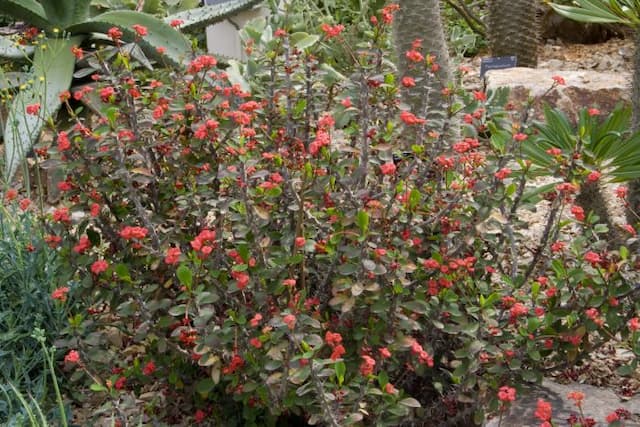
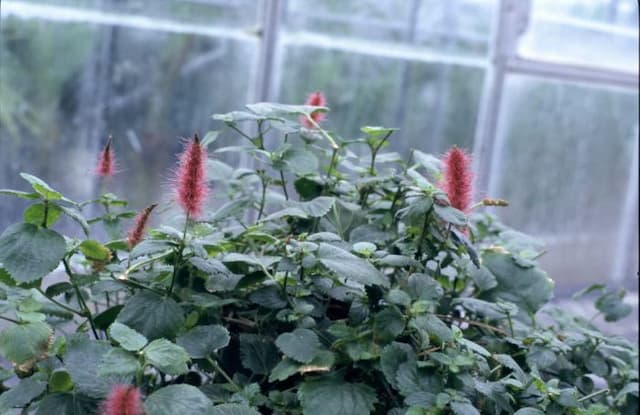
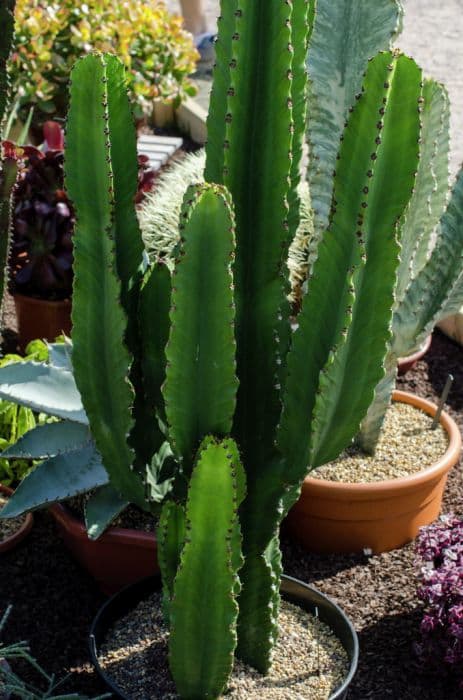
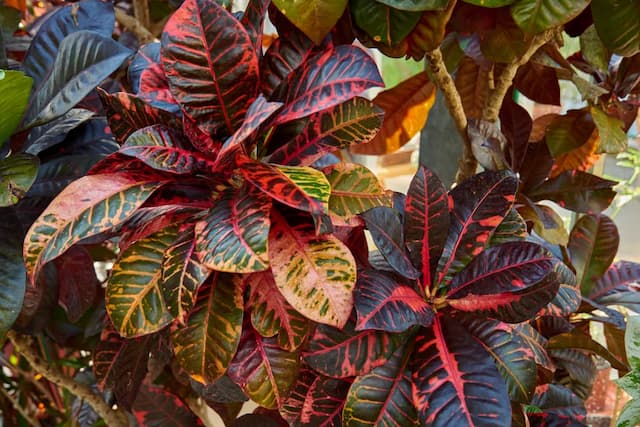
![Poinsettia [Jester Red]](/_next/image?url=https%3A%2F%2Fplants-admin.emdemapps.com%2Fimages%2Fplants%2F%2Fimages%2F604b55de5eb2c.png&w=640&q=75)


